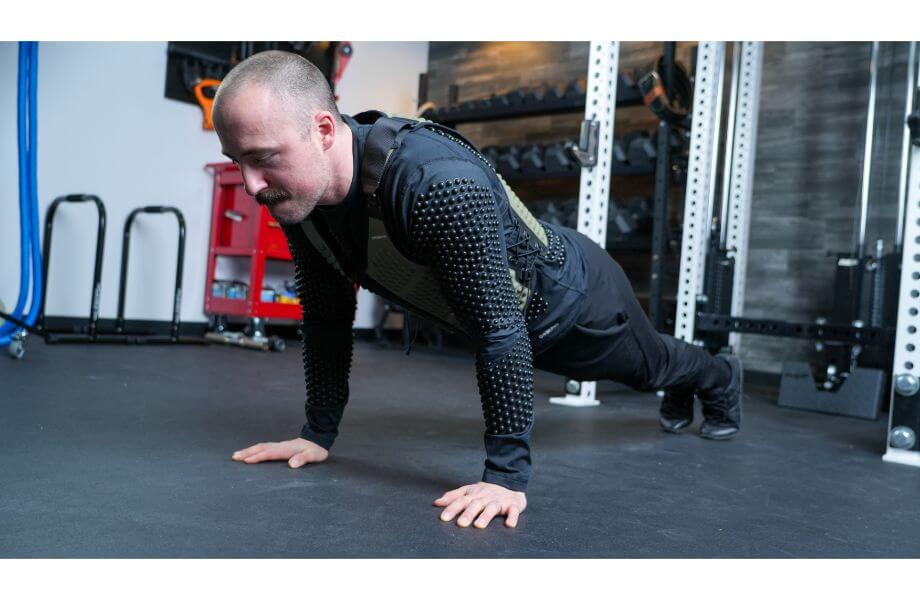We test and review fitness products based on an independent, multi-point methodology. If you use our links to purchase something, we may earn a commission. Read our disclosures.
Gyms are full of people moving and grooving through their workouts. Some show up to log miles during a treadmill workout, others prefer hitting the weights and getting a solid pump.
Would you believe you could also get an excellent workout by standing still?
Well, you do have to do a little more than stand there, but you can get great muscle activation from simply holding a static position. They’re called isometric exercises, and they’re great for improving your strength, flexibility, balance, and mental fortitude too!
We’d never recommend disposing of dynamic exercise altogether, but incorporating isometric training into your workout routine alters the stimulus and helps you unlock strength gains and build muscle.
Today, we’re covering what isometric exercise is, the benefits of isometric exercise, potential risks, and a few to include in your next session.
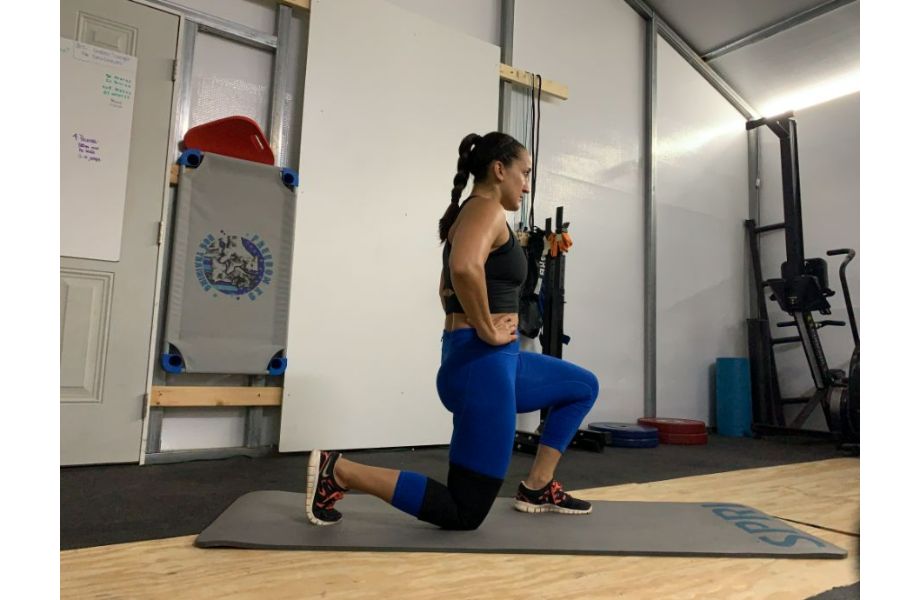
What Are Isometric Exercises?
Dynamic exercise is what most people think of when they think about fitness. It’s cardio, resistance training, weightlifting, calisthenics— any activity that requires movement or moving an object through a range of motion could be considered dynamic.
Isometric exercises, on the other hand, are a form of static exercise, which involve holding a position while your muscles are contracted. It’s essentially flexing your muscles, holding it for a period of time, then letting it go to rest.
Isometric Exercises vs Concentric and Eccentric Exercises
Typical exercises are categorized as isotonic, meaning they include a concentric phase, in which the muscle shortens, and an eccentric phase, in which the muscle lengthens.
To use the classic bicep curl as an example, your muscle contracts concentrically as you curl the dumbbell to your shoulder, then contracts eccentrically as you lower the weight down.
According to the British Journal of Sports Medicine1, studies show that “when eccentric exercise was performed at higher intensities compared with concentric training, total strength and eccentric strength increased more significantly…[and] was shown to be more effective in promoting increases in muscle mass.”
Eccentric training builds muscle and strength because it causes the most trauma to the muscle fibers and often has your muscles under tension for longer compared to concentric exercise.
Does that mean the concentric phase is a wash? Heck no! Concentric exercise prioritizes speed and power, developing essential fast-twitch muscles that are crucial for sprinters, Olympic weightlifters, and other high-intensity athletes.
As we said before, most exercises are isotonic, including a concentric and eccentric phase, making isometric exercises immediately more unique than these other forms of muscle contraction.
Unlike isotonic exercise, isometric exercises do not involve shortening or lengthening of the muscle at all; they’re contracted in a static position and held for a period of time to improve isometric strength and stability. According to Healthcare (Basel)2, “isometric training increases strength and the muscles’ ability to produce power.”
Because isometric exercise produces a vastly different stimulus compared to traditional training methods, a well-rounded approach using all types of exercise is valuable to any comprehensive strength training program.
Do Isometric Exercises Build Muscle?
A 2022 study published in the International Journal of Exercise Science3 endeavored “to evaluate the acute effects of different durations of the isometric forearm plank exercise (IFPE) on peak force, echo intensity, muscle thickness, and perception of effort.”
Researchers observed a “significant difference” in muscle thickness, specifically in the test group who successfully held the plank for 3-minute intervals, indicating that isometric exercises do indeed build muscle.
Are they the best way to build muscle though?
“Isometric exercise is one way to build strength and stability,” says Kate Meier, certified personal trainer (CPT) and GGR Head of Content, “but it’s not the best way to build muscle. Using isometric training in conjunction with traditional resistance training, such as using heavy weights and high rep schemes, should get you results faster.”
And, of course, never discount the value of a qualified personal trainer!
RELATED: How Many Reps To Build Muscle
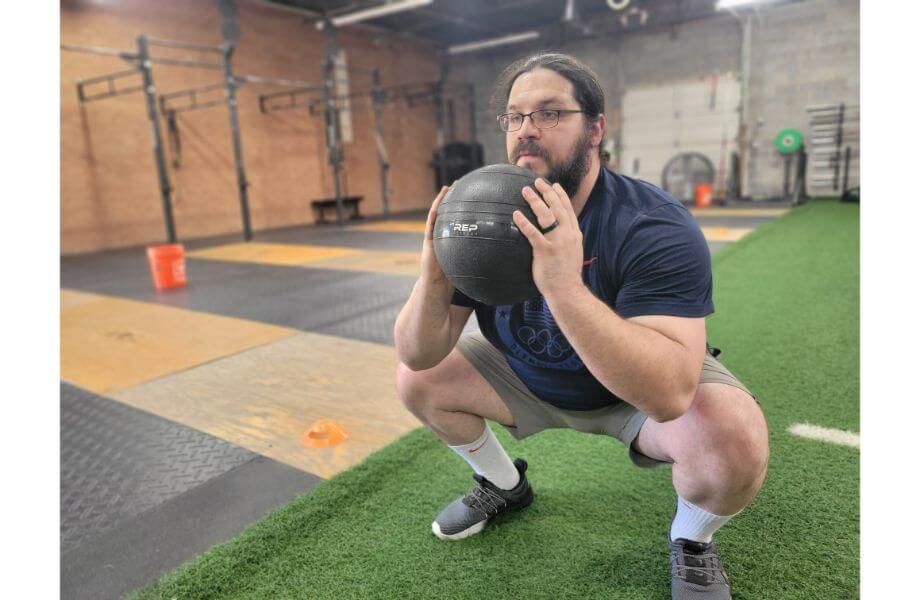
How Effective Are Isometric Exercises?
Isometric exercise can be very effective. According to a 2019 study published in the Scandinavian Journal of Medicine & Science in Sports4, isometric training yielded “substantial improvements in muscular hypertrophy and maximal force production.”
The same study determined that “high-intensity contractions…[improve] tendon structure and function,” while isometric exercise that features “long muscle length training results in greater transference to dynamic performance.”
Another study, published in 2015 in the Journal of Strength and Conditioning Research5, determined isometric exercise, namely the plank, improves “core stiffness,” or core stability, thus “[enhancing] load bearing ability,” translating to improved dynamic movement, and reducing back and knee pain.
Because of this, isometric exercises are commonly used for injury prevention and rehabilitation. The exercises are simple to learn, even for beginners, often require no equipment to perform, and are super gentle on the joints, making them very effective for improving strength and stability regardless of a person’s fitness level.
RELATED: Low-Impact Cardio Exercises
Potential Risks of Isometric Exercises
Isometric exercises often make a great addition to a workout, but not everyone can confidently include it before speaking to their doctor.
A 1992 review published in Cardiology Clinics6 stated that “static exercise also causes significant increases in blood pressure, heart rate, myocardial contractility, and cardiac output,” which can “[lead] to concentric cardiac, particularly left ventricular, hypertrophy.”
Left ventricular hypertrophy, often abbreviated as LVH, is known to increase your risk of heart attack, heart failure, stroke, and heart rhythm problems. For this reason, it is advised you consult your doctor or a medical health professional before engaging in isometric training.
Another study, published in 2021 in the Journal Français d’Ophtalmologie7, determined that “isometric exercise may cause an increase in [intraocular pressure] and [ocular perfusion pressure], therefore, people with glaucoma and related high risk should perform isometric exercise with caution.”
Your doctor may contraindicate isometric training if you have high blood pressure, cardiovascular issues, a history of cardiac events, or glaucoma, among other pertinent conditions.
It’s always prudent to consult a medical professional prior to beginning a new exercise program.
5 Isometric Exercises to Try
So, you’re sold on the benefits of isometric exercise and your doctor has given you the green light to get started. What exercises will open the door to new strength gains?
Here are five to get you started.
1. Forearm Plank
Why it’s great: Planks are the quintessential core blaster, targeting the rectus abdominis, obliques, and low back, among other muscles, for core strengthening and trunk stabilizing.
How to do it:
- Get into the push-up position, then place your forearms and elbows on the floor. Tighten your core and keep your butt low. You should form a straight line with your body.
- Hold for desired duration.
RELATED: The Best Ab Exercises
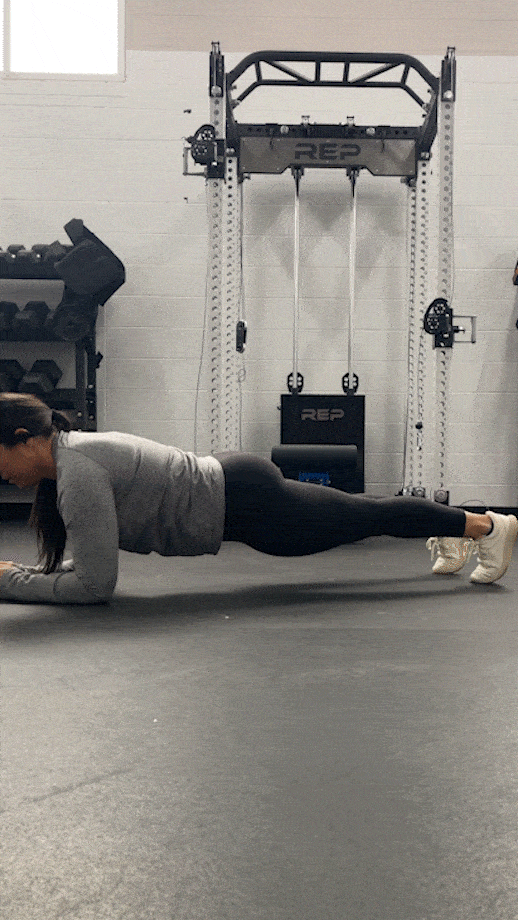
2. Side Plank
Why it’s great: Side planks are similar to front planks in their effectiveness, but place a greater emphasis on your shoulders, hips, and spine. They also target the quadratus lumborum, which can reduce your risk of future back injury.
How to do it:
- Lie on one side with your knees straight and your elbow beneath your shoulder.
- Prop your body up and raise your opposite hand toward the ceiling. Align your feet, knees, and hips together.
- Brace your core, lift your hips, and hold for time.
- Repeat for the other side.
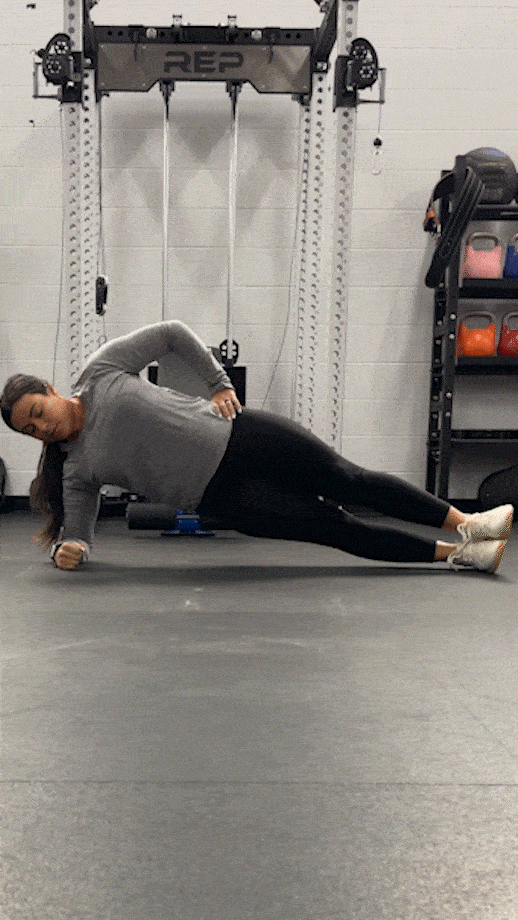
3. Wall Sit
Why it’s great: Wall sits build isometric strength and endurance in some key lower body muscles, including the glutes, calves, and quadriceps.
How to do it:
- Stand with your back flat against a wall.
- Lower your body as though you are sitting down in a chair. Your knees should form a 90-degree angle and your thighs should be parallel to the floor.
- Hold for desired duration.
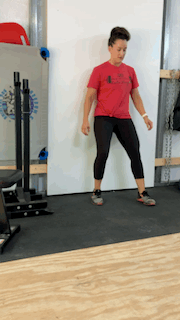
4. Lunge Hold
Why it’s great: Lunge exercises are among the best leg movements available, providing activation to the quads, glutes, hamstrings, and hip adductors. Stepping into a lunge and holding it similarly provides activation, helping stretch and strengthen these muscle groups.
How to do it:
- Stand with your feet shoulder-width apart.
- Step forward with your right foot and bend the knee to create a 90-degree angle with both knees. The knee of your left leg should hover above the floor or lightly tap it. Your right knee should be stacked directly above your ankle.
- Hold for the desired duration.
- Push from your front foot to return to the starting position.
- Repeat the exercise, stepping with the left foot this time.
- Repeat as needed.
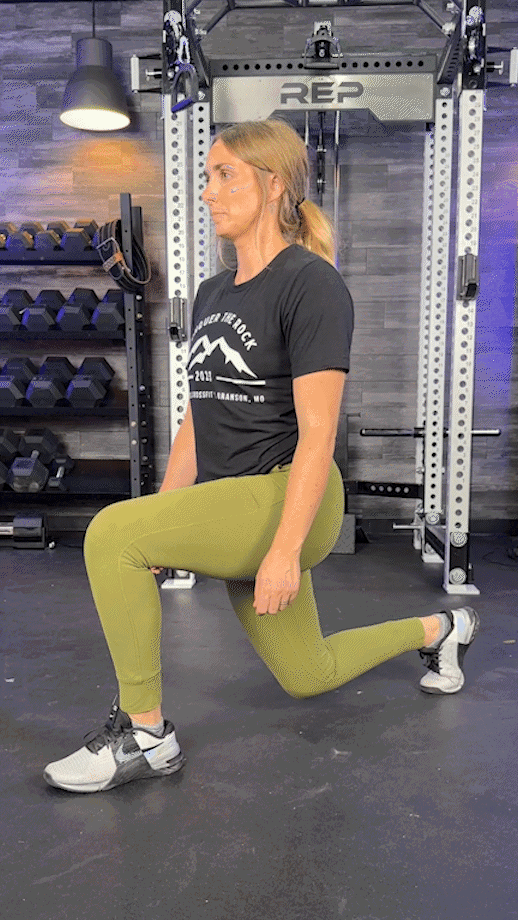
5. Glute Bridge Hold
Why it’s great: Glute bridges work wonders for your glutes, but they also improve lower back stability and hip mobility. You also get a great stretch that helps provide relief to those suffering from chronic back pain.
How to do it:
- Lie face up with your knees bent and feet flat on the floor.
- Pressing your feet into the floor, extend your hips and lift your butt off the floor.
- Flex the glutes at the top and hold for the desired duration.
- Slowly return to the starting position and rest.
- Repeat as needed.
RELATED: 17 Lower Back Exercises
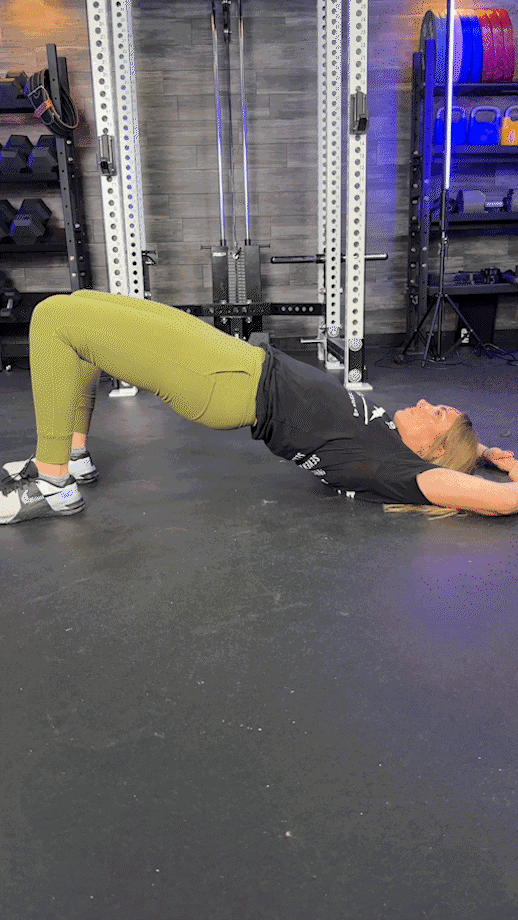
Final Thoughts: Isometric Exercises
Sometimes, as Paul Rudd’s character in Forgetting Sarah Marshall put it, you need to do less in order to do more. Does that make sense? Yeah, Jason Segal’s character didn’t get it either…
But in the case of isometric exercise, it totally applies!
Isometric exercises challenge your muscles in ways that traditional isotonic exercise does not, helping provide a unique stimulus that will inspire additional improvements in muscle strength, size, and endurance.
However, there are some risks associated with isometric training, so we recommend checking in with your doctor before jumping into the deep end with both feet. Once cleared, you will open the door to another level of training.
Let’s get it, fitness fam! Good luck!
FAQs: Isometric Exercises
What are examples of isometric exercises?
Some isometric exercises include the front plank, side plank, wall sit, lunge hold, and glute bridge hold.
Other isometric exercises include dead hangs, pull-up holds, deadlift holds, hollow holds, calf raises, and more. Virtually any isotonic exercise that can incorporate a pause while the muscles are contracted could include isometric muscle activation.
RELATED: How And Why To Do Tempo Training
What are isometric exercises good for?
Isometric exercises offer similar fitness benefits to your standard dynamic exercise, including increases in muscle strength, size, and endurance. Studies show8 that isometric exercise training could also improve your resting blood pressure.
RELATED: Does Cardio Lower Blood Pressure?
Isometric exercise is truly beneficial for two reasons:
– They produce a totally different stimulus compared to traditional isotonic exercise.
– They’re super convenient because it’s easy to learn proper form for most isometric exercises, they can generally be performed with no equipment whatsoever from anywhere with a floor and a wall, and they’re low impact.
Therefore, isometric exercises are good for minimalists or those looking to switch things up from traditional dynamic exercise.
How long should you hold an isometric exercise?
An aforementioned study published in the International Journal of Exercise Science3 observed the greatest increases when a plank was held for 3-minute intervals, but this is incredibly challenging.
Generally speaking, 30 to 60 seconds is often adequate for beginners, and you can scale from there to increase the time under tension. We fully support pushing yourself past your perceived limits, whenever possible, but never do anything that poses a risk to your health or well-being.
References
1. Roig M, O’Brien K, Kirk G, et al. The effects of eccentric versus concentric resistance training on muscle strength and mass in healthy adults: a systematic review with meta-analysis. Br J Sports Med. 2009;43(8):556-568. doi:10.1136/bjsm.2008.051417
2. Widodo AF, Tien CW, Chen CW, Lai SC. Isotonic and Isometric Exercise Interventions Improve the Hamstring Muscles’ Strength and Flexibility: A Narrative Review. Healthcare (Basel). 2022;10(5):811. Published 2022 Apr 27. doi:10.3390/healthcare10050811
3. Aleais DAS, Sullivan K, Ferreira P, Marchetti PN, Marchetti PH. Acute Dose-Response of Duration During the Isometric Forearm Plank Exercise on Muscle Thickness, Echo-Intensity, Peak Force, and Perception of Effort in Recreationally-Trained Participants. Int J Exerc Sci. 2022;15(6):676-685. Published 2022 May 1.
4. Oranchuk DJ, Storey AG, Nelson AR, Cronin JB. Isometric training and long-term adaptations: Effects of muscle length, intensity, and intent: A systematic review. Scand J Med Sci Sports. 2019;29(4):484-503. doi:10.1111/sms.13375
5. Lee BC, McGill SM. Effect of long-term isometric training on core/torso stiffness. J Strength Cond Res. 2015;29(6):1515-1526. doi:10.1519/JSC.0000000000000740
6. Longhurst JC, Stebbins CL. The isometric athlete. Cardiol Clin. 1992;10(2):281-294.
7. Li Y, Li S, Wang Y, Zhou J, Yang J, Ma J. Effects of isometric resistance exercise of the lower limbs on intraocular pressure and ocular perfusion pressure among healthy adults: A meta-analysis. J Fr Ophtalmol. 2021;44(10):1596-1604. doi:10.1016/j.jfo.2021.05.005
8. Edwards J, De Caux A, Donaldson J, Wiles J, O’Driscoll J. Isometric exercise versus high-intensity interval training for the management of blood pressure: a systematic review and meta-analysis. Br J Sports Med. 2022;56(9):506-514. doi:10.1136/bjsports-2021-104642
Further reading

Could laying on a bed of spikes help enhance blood flow, provide pain relief, and hasten your recovery? Find out in this deep dive on acupressure mat benefits. Read more

In our ProForm Crosswalk 390 Treadmill review, we take a look at this now-discontinued machine and offer similar alternatives. Read more

Creatine monohydrate is considered the gold standard, but are other forms of creatine better for gains? We’ll break it down in this creatine HCl vs monohydrate standoff. Read more

Gyms are full of people moving and grooving through their workouts. Some show up to log miles during a treadmill workout, others prefer hitting the weights and getting a solid pump.Would you believe you could also get an excellent workout by standing still?Well, you do have to do a little more than stand there, but you can get great muscle activation from simply holding a static position. » Read more about: Isometric Exercises: Hidden Keys to Unlocking Your Strength Potential » Read more

